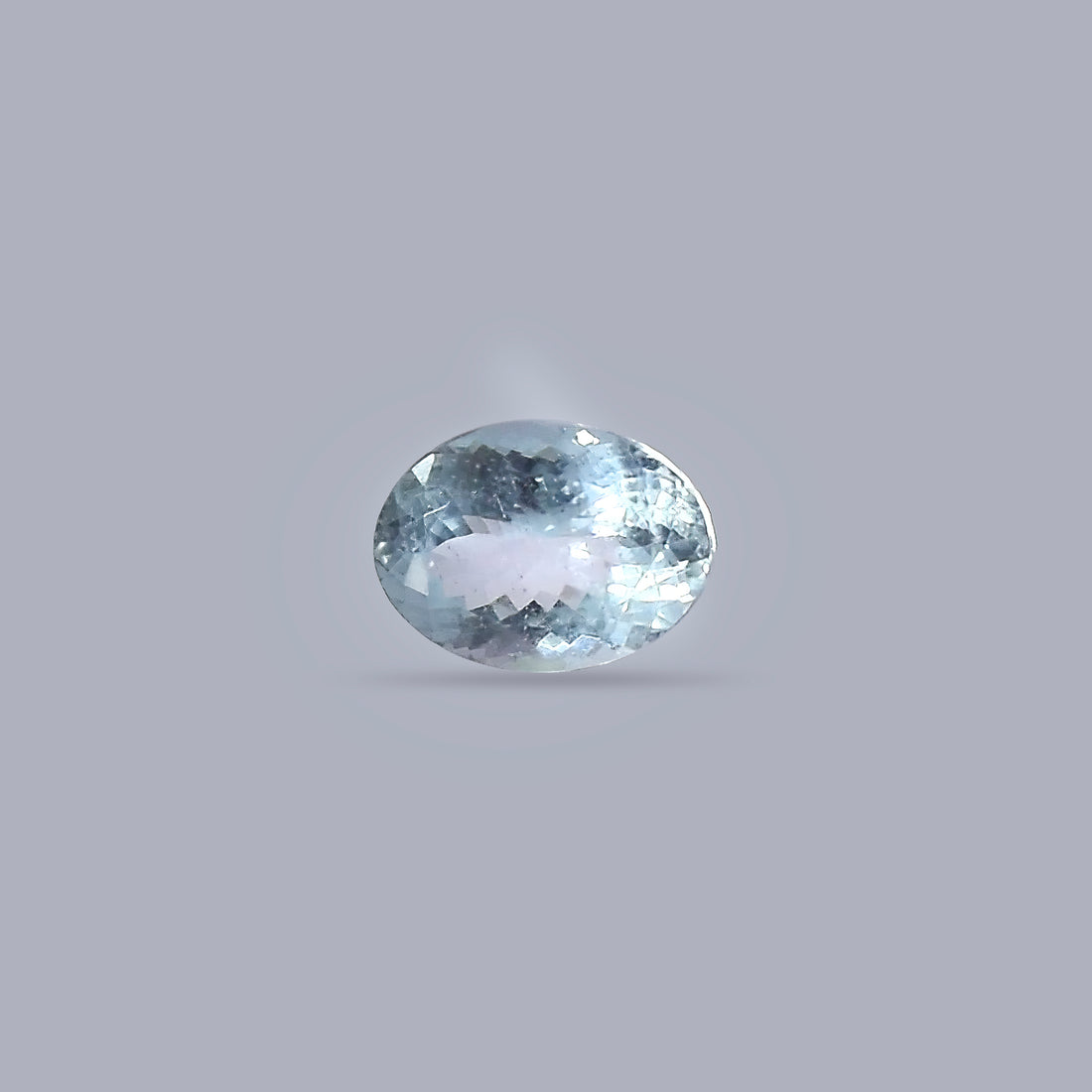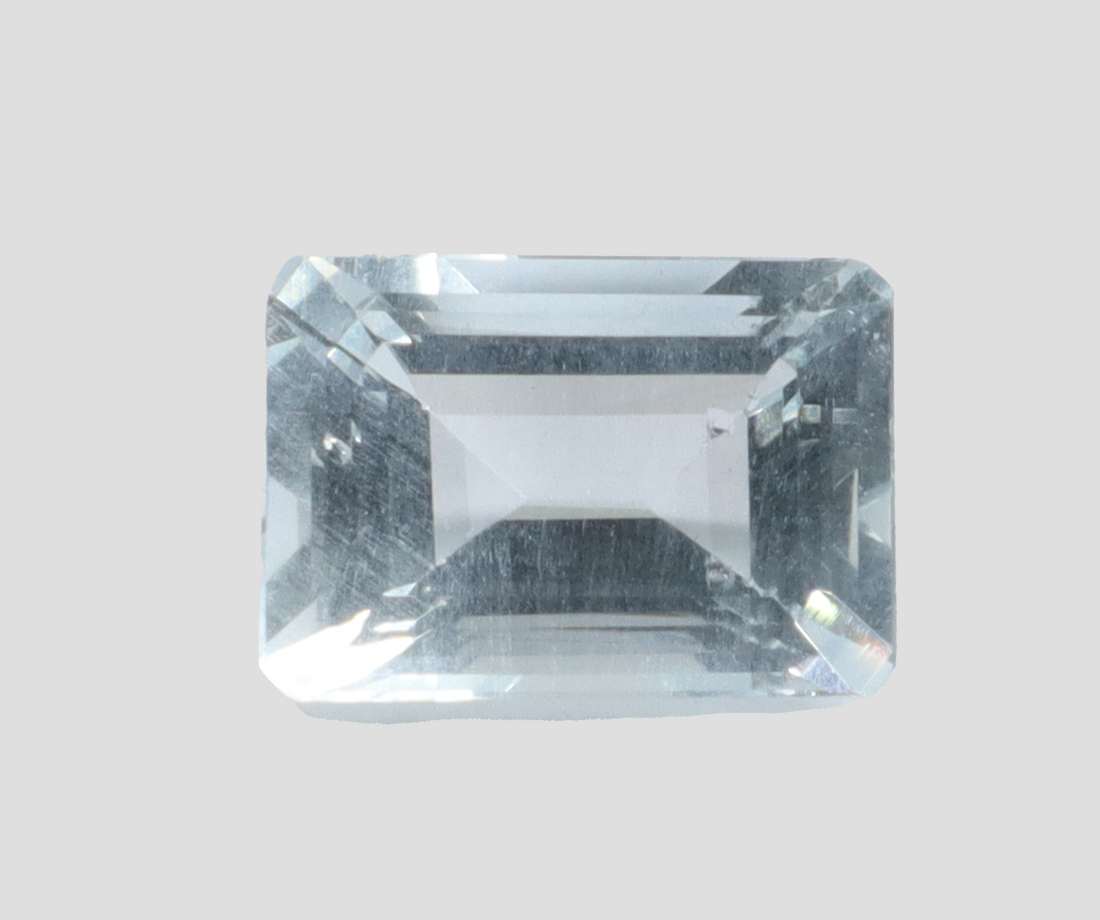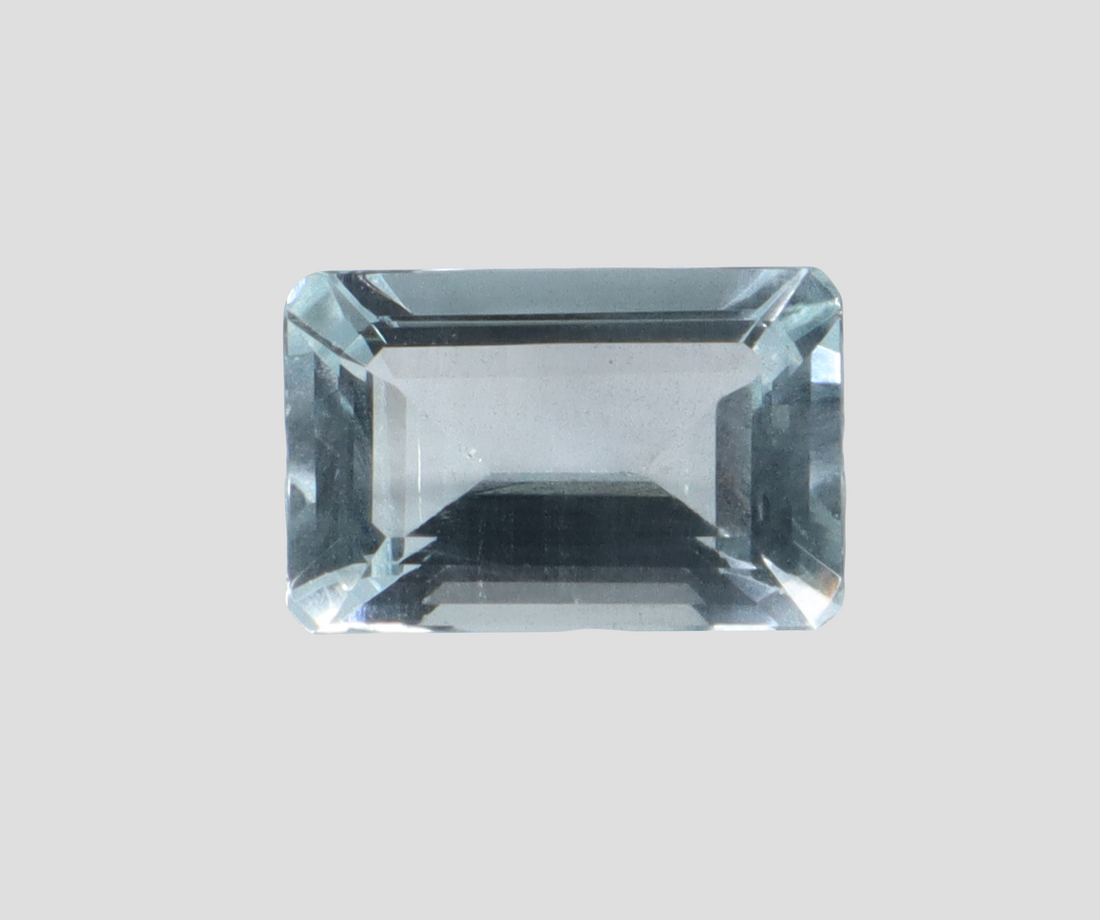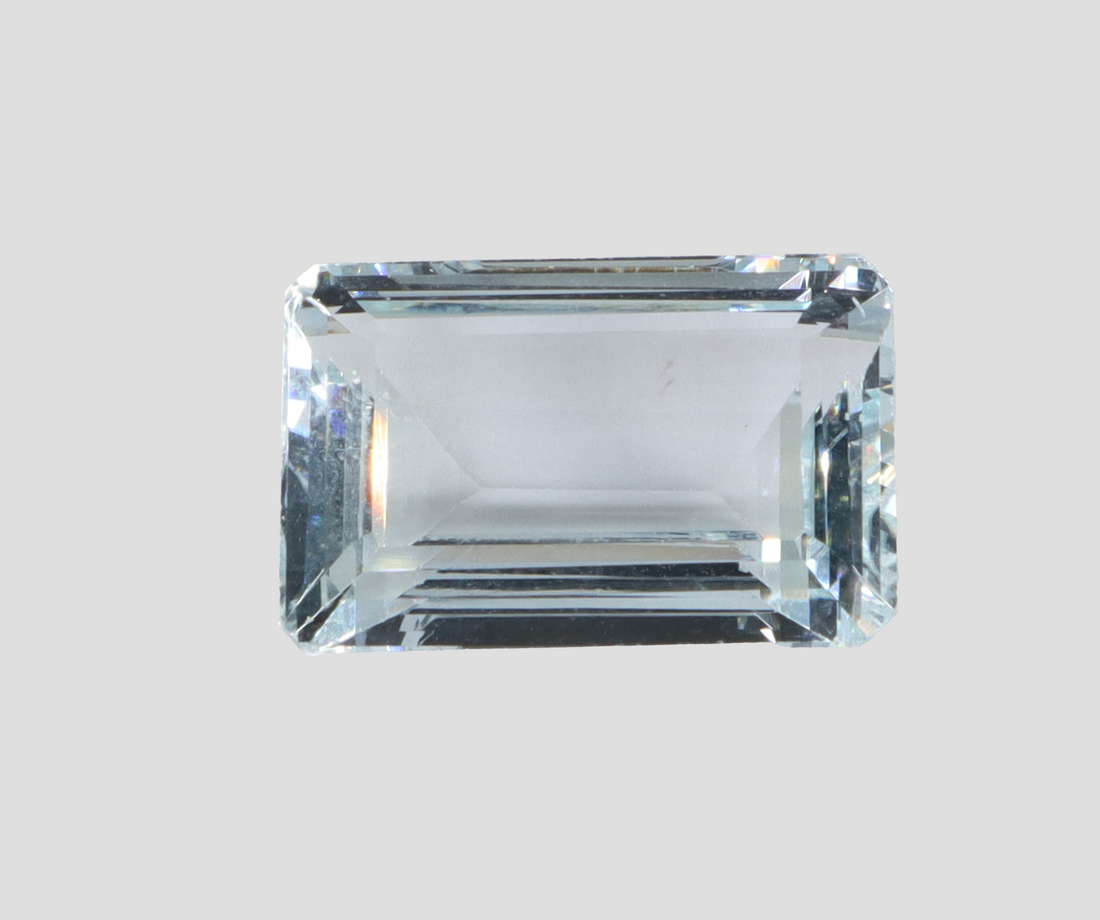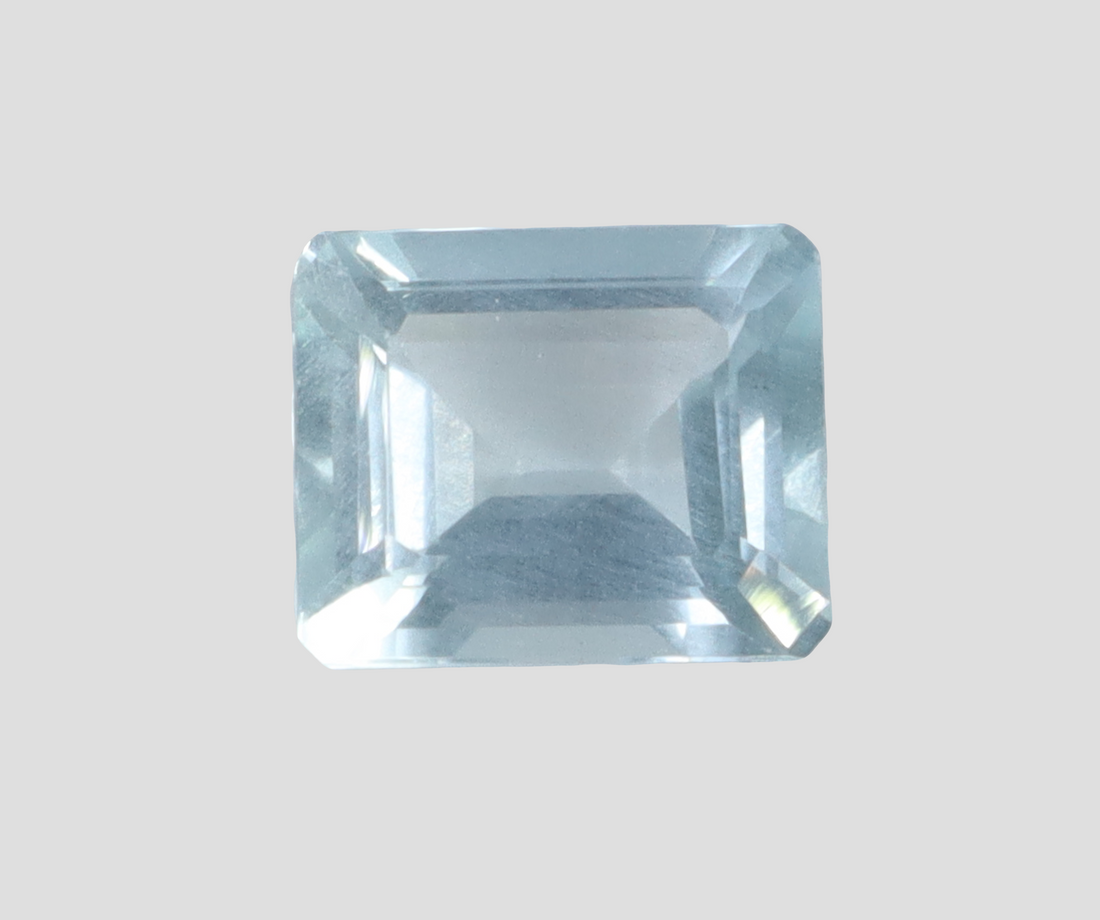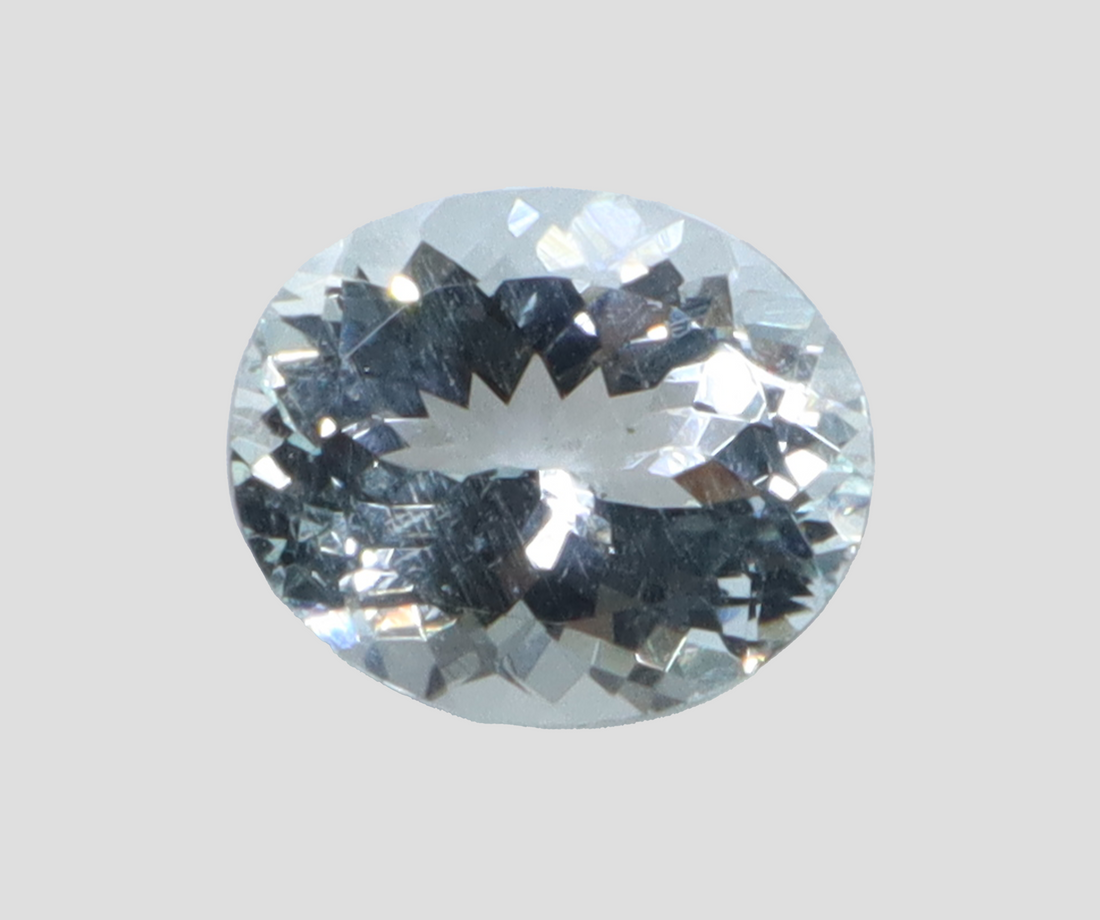This article serves as part of an ongoing series of profiles on the different varieties of precious & semi-precious gemstones. To view the entire list, click here.
Aquamarine, or the Beruj stone as it is known in India, is truly a gemstone that captures the imagination. With its calm blue color and refreshing allure, aquamarine stone brings joy to jewelry collectors worldwide. Often hailed as one of Earth's most spiritually potent gemstones, aquamarine's beauty is intricately tied to the serene yet powerful rhythm of ocean waves.
This exquisite aqua-blue gem, occasionally tinged with green, is a type of beryl mineral – the same as emeralds. Highly prized in jewelry like rings, necklaces, and bracelets, its clear blue hue mirrors the pristine depths of a crystal-clear ocean. In this comprehensive guide, we unravel the mysteries of aquamarines – from their formation and origins to color variations and astrological significance. Keep reading to understand everything you need to know about aquamarines.
1. Aquamarines - Formation & Occurrence
The name "aquamarine" originates from the Latin words "aqua" signifying water, and "marina," meaning of the sea. This gemstone is primarily formed in mineral-rich pegmatite rocks that contain minerals like quartz, garnet, and topaz. They serve as the primary environment for aquamarine formation.
Beryl minerals, of which aquamarine is a variant, consist of beryllium aluminium silicate and are commonly found in granite pegmatite rocks, hydrothermal carbonate veins, and cavities altered by hydrothermal processes. The formation process involves internal cracks and voids within pegmatites. As hot magma interacts with the rocks underground, initiating a chemical chain reaction among the minerals, the gradual cooling of magma leads to the crystallization of these silicate-based minerals, such as aquamarine, within these voids. This cooling process spans millions of years, with aquamarine requiring a particularly extended period for crystallization due to its silicate composition.
 A rough Aquamarine crystal
A rough Aquamarine crystal
While large raw aquamarine crystals are not uncommon, aquamarine's crystal structure can make it brittle due to inclusions and cracks within the stone. With a Mohs hardness ranging between 7.50 and 8.00, aquamarine is generally durable when flaws are not present. However, like emeralds, aquamarines require careful handling and cleaning due to their crystalline nature, which can form weaknesses over time if they are not properly maintained.
2. Where Are Aquamarines Found?
Although named for its sea-blue colour, aquamarine was first discovered far from the sea in Siberia in 1723. By the late 18th century, Siberia had become a major source, with substantial deposits mined and sent to Western Europe. Today, some of the most significant aquamarine deposits are in Pakistan, Brazil, the Ural Mountains of Russia, China, California, Colorado, the United States, Myanmar, Ukraine, and various African nations. Sri Lanka is also a notable source of aquamarines.
3. The Colour Span of Aquamarines
The color of aquamarines plays a crucial role in determining their value. Aquamarines have a rather narrow spectrum of colors that ranges from pale and light blues of low intensity to vibrant and deep aqua blues with a high degree of intensity. They can also occur in aqua blues with a subtle green tint.
Natural aquamarine gemstones typically exhibit lighter shades of blue reminiscent of seawater, ranging to teal-like greenish blues. The truly valuable aquamarine colour spectrum encompasses darker, more intense blues—sometimes with a hint of green. Generally, aquamarines with a lower percentage of green tint are preferable.
The most valuable aquamarine colours exhibit a dark, pure blue that approaches intensely saturated shades without seeming overly green. Lighter, less saturated shades are less desirable due to their lower intensity. Surprisingly, what is often referred to as "aquamarine blue," a beautiful teal color closer to green, is actually considered less valuable despite its desirability. The purity and intensity of the blue shade ultimately determine an aquamarine's value within its narrow color range.

The different shades of an Aquamarine (Source: Geology.com)
4. Common Inclusions in an Aquamarine
Aquamarine crystals, often confused with blue topaz, are generally more transparent than emeralds but can still contain various types of inclusions:
- Biotite: A dark-colored mineral that might appear as dark spots or patches within the aquamarine.
- Hematite: Known for its metallic luster, hematite might present itself as reddish-brown spots or streaks in the gemstone.
- Ilmenite: This inclusion can manifest as dark needle-like structures or irregular patches within the aquamarine gem.
- Phlogopite: A type of mica, phlogopite could appear as thin, reflective sheets within the aquamarine gemstone.
- Pyrite: Recognizable by its metallic golden appearance, pyrite might show up as small, shiny flecks within the aquamarine stone.
- Snow-stars: These are essentially liquid droplets trapped within the stone, forming a star-like shape, adding a distinct and fascinating characteristic to the gem. These formations are quite rare and can enhance the gem's allure for collectors and enthusiasts.
5. Common Treatments & Enhancements of Aquamarines
Predominantly, aquamarines undergo heat treatment to intensify their color from bluish-green to a more desirable pure blue shade, a widespread practice in the gemstone industry. This process enhances their appeal and market value, and does not affect the structural integrity of the stone.
Oil filling, while relatively rare in aquamarines, is a method where colorless oils or resin are infused into the gem to enhance clarity and minimize imperfections. However, compared to heat treatment, this enhancement is quite uncommon in aquamarines.
| Mineral | Beryl |
|---|---|
| Colour Span | Pale aqua-blue with green tints, to a deeply-saturated & intense aqua-blue |
| Popular Origins | Brazil, Nigeria, Pakistan, Mozambique, Sri Lanka (Ceylon), etc. |
| Mohs Hardness | 7.50 - 8.00 (on a scale of 10) |
| Common Treatments | Thermal enhancement (heat treatment); very occasionally filled with oil/resin |
| Birthstone | March |
Aquamarines - A Quick Snapshot
6. Evaluating the Quality of an Aquamarine
Determining the grade of a gemstone involves considering various factors, and understanding how the 4Cs contribute to their value, is crucial. Aquamarine color, cut, clarity, and carat all play vital roles in establishing its overall value:
- Colour: The distinguished blue-green hue of the aquamarine crystals is a defining characteristic, carrying substantial importance in gemstone grading. Unlike colorless stones, like diamonds or white sapphires, the assessment of colored gemstones places a greater emphasis on color. Stones with a more intense and vibrant hue are highly prized, surpassing those with lighter shades. A higher saturation of color makes inclusions less visible and contributes to the overall beauty of the finished piece of jewellery - be it earrings, rings, or pendants.
- Clarity & Inclusions: High-quality, jewelry-grade aquamarine gemstones should be "eye clean" - signifying the absence of visible incorporation of materials when inspected without magnification. Gemstones with noticeable inclusions are typically utilized in beads or carvings rather than in fine jewelry.
- Cut: The cut of aquamarine is another crucial factor in its grading, and preferences can vary. The emerald and square cuts are the most popular for this blue-green gem as they accentuate its natural beauty and brilliance. Other common cuts for aquamarine include rounds, cabochon and mixed-cuts. The gemstone's hardness and transparency contribute to its popularity among designers, artists, and carvers.
- Carat Weight: Aquamarines are available in a wide range of carat weights, from tiny fractions of a carat to very large stones. However, unlike other gemstones, the carat weight of an aquamarine is not a major factor in determining its overall quality or price. This is because aquamarines are relatively abundant, so there is no significant shortage of large specimens. As a result, the price of aquamarine does not increase as dramatically as the price of other gemstones, such as sapphires, as the carat weight increases.
 The Dom Pedro Aquamarine is the largest specimen - weighing in at 10,363 carats or 2.07 kilograms
The Dom Pedro Aquamarine is the largest specimen - weighing in at 10,363 carats or 2.07 kilograms
7. How Much Do Aquamarines Cost?
Although part of the same mineral family as emeralds – Beryl, aquamarines are less rare relative to their green counterparts. Aquamarines' pricing can span a broad range, typically from $75 to $300 per carat, on average. However, exceptional quality stones or larger sizes can command prices extending into thousands of dollars.
8. Aquamarines in Astrology
Noteworthy as the birthstone for the month of March and associated with 19th wedding anniversaries, natural aquamarine, or the Beruj stone as it is known in India, holds significance in astrology. Aligned with the planet Saturn, individuals born under the zodiac signs of Capricorn, Aquarius, Pisces, and Aries are recommended to wear Aquamarine. Other compatible ascendants include Gemini, Virgo, and Taurus.
For aesthetic pairing, this March birthstone is best worn in silver, platinum, or white gold. Astrologers often suggest silver as the ideal metal to accompany the Beruj stone, but platinum and white gold are viable options based on personal budget and preference.
 Aquamarines in Astrology
Aquamarines in Astrology
In general, aquamarines are known to offer the following benefits to their wearers:
- Financial Status: Aquamarine gemstone is believed to positively impact financial conditions. Wearing this gemstone is thought to help alleviate material cravings and insecurities, promoting a more stable and secure financial state.
- Relationships: Blessed by the powers of the planet Saturn, Aquamarine is associated with fostering loyalty, faithfulness, and eternal love in relationships. It is considered beneficial for creating a harmonious and enduring bond between partners.
- Confidence & Communication: For those facing challenges in communication due to introversion, shyness, or lack of confidence, aquamarine is thought to ease the expression of thoughts and feelings. Wearing aquamarine gemstone may increase self-confidence and fluency in communication.
- Healing Energies: Aquamarine's healing energies are said to soothe distress and pain lingering from past events. It is believed to effectively dispel unwanted emotional and karmic energies, promoting emotional well-being. Combining aquamarine and peridot in crustal healing brings emotional invincibility and relief from depression. Aquamarines foster serenity and spirituality, and when paired with peridot, often helps alleviate depression.


